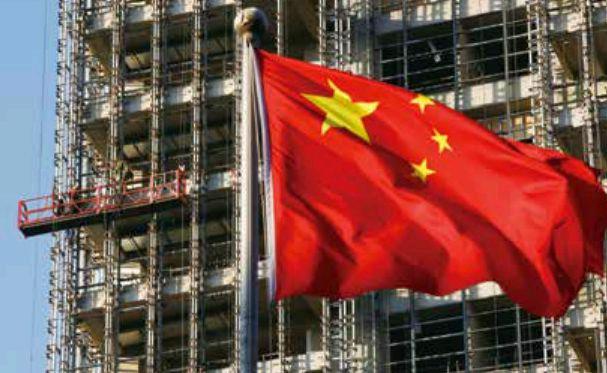S&P: Real estate downturn may pose biggest risk to Chinese banking sector
2015-04-23
S&P: Real estate downturn may pose biggest risk to Chinese banking sector
At the press conference held in Beijing on Dec. 2nd, international credit rating agency Standard and Poors (S&P) said that with the economic growth slowing down, Chinas top 50 banks will find it increasingly difficult to maintain favorable profits and appropriate asset qualities in the coming two years, behind which the biggest factor may be the sharp and continuous declines in Chinas real estate market.
“With the economy continuing to slow down, a second wave of credit losses may be building up for Chinas top 50 banks,” said Liao Qiang, a senior director with S&P. “Although banks profitability is maintained at a satisfactory level, loan quality continues to fall and capital level also remains under pressure.”
According to data, Chinas commercial banks non-performing loan ratio in real estate industry in 2013 stood at only 0.5%.
However, the domestic banks actual direct credit exposure to real estate development and construction loans is far above the figure released in financial reports and S&P estimates that 30% to 40% of Chinas corporate loans use real estate and land as collateral, according to Liao.
“Chinas real estate is still in a destocking phase. As a result, the prices will be slightly down and real estate markets will see a clear differentiation in different cities,” said S&Ps managing director Li Guoyi, in response to whether the central banks move to cut the interest rate in the second half of 2014 and the local governments plan to relax restrictions will stimulate the real estate market into recovery.
“First-tier cities will see a relatively healthy real estate market, while secondtier cities will find real estate prices stabilizing in local areas. The situation in third-tier cities is forecast to continue to worsen,” added Li.
In a previous report, the credit rating agency predicted that Chinas property market would see a year-on-year decline of 5%in sales in 2014, followed by a further 5% decline or a flat growth in 2015.
“Banks that are aggressive but unprepared, especially those that are smallscale and short of competitive advantages, could be hardest hit. Those aggressive banks which have too high leverage ratios or lack mature risk management are likely to be caught off-guard when there are rapid changes in market conditions, ”said S&P.
Shanghai Disneyland to open on National Day in 2015 at earliest
The construction of the Shanghai Disneyland, the worlds sixth Disney project and the first in the Chinese mainland, is about to be completed on Jan. 30th, 2015, according to an announcement made by Shanghai Construction Group, one of major constructors of the theme park on Dec. 3rd, 2014.
The constructor said that the theme park is expected to open on the National Day in 2015 at the earliest.
Located in the citys Pudong New District, the first phase of the Disney project covers an area of 390 hectares and involves a total cost of 29.5 billion yuan, including 24.5 billion yuan for the theme park and 4.5 billion yuan for the establishment of the hotels and restaurant venues.
The Shanghai Disneyland will also be the third of its kind in Asia, after Tokyo and Hong Kong.
Northeast Securities expects the Disney project will bring at least 33.6 billion yuan revenue to Shanghai, equivalent to 1.6% of the gross domestic product(GDP) in the city in 2013.
The theme park will attract some 14 million tourists in the first year after it opens, according to Northeast Securitiesestimate.
Haitong Securities estimates that the number of tourists to the park will reach 15 million in the first year, while CITIC Securities forecasts that the number of tourists to the park will total 18 million in 2016, 21 million in 2017 and 24 million in 2016 and during the stable period, the number will reach 30 million.
IEA: Global annual coal demand to top 9 bln tons by 2019
According to the latest Midterm Coal Market Report released by the International Energy Agency (IEA), the global coal demand will grow to exceed to 9 billion metric tons by 2019, though at a slowing rate.
Over the past few years, China has stepped up efforts to reduce its coal consumption. However, the country will still account for 60% of the global demand growth in the next four years.
Generally speaking, Asia is the main engine of global coal consumption growth, but the growth in the region is not enough to offset declines in Europe and the United States.
“We have heard many promises and policies on climate change mitigation, but most of them will fail to suppress the growth in coal demand in the coming five years,” said Maria Van der Hoeven, executive director of the IEA .
According to the IEAs estimate, global coal demand will grow at an average rate of 2.1% per year in the next five years through 2019, lower than the 2013 reports forecast of 2.3% for the five years through 2018 and the actual annual growth rate of 3.3% during the period between 2010 and 2013.
“China will determine the fate of the global coal market as has been the case for more than a decade,” the IEA said in a press release.
As the worlds biggest coal producer, consumer, and importer, China has embarked on a campaign to diversify its energy supply and reduce its energy consumption intensity, which entails a staggering increase in gas, nuclear and renewables, according to the press release.
“However, despite the Chinese governments efforts to control the coal consumption, the countrys coal consumption will not peak in the coming five years under normal macroeconomic circumstances,” the IEA concluded.
China to provide 3-bln-yuan free aid to less developed ASEAN countries in 2015
At the 5th Greater Mekong Subregion (GMS) Economic Cooperation Summit held in Bangkok on Dec. 20th, 2014, Chinese Premier Li Keqiang reiterated that China will always keep promoting friendly exchanges with countries along the Mekong River and put forwards five suggestions for future cooperation.
Li said that China advocates the establishment of cross-border sub-regional cooperation e-commerce platforms.
In 2015, China will offer $3 billion worth of loans and aid to the five neighboring countries in the Indo-China Peninsula, namely Vietnam, Cambodia, Burma, Thailand and Laos, as parts of efforts to help those countries better their infrastructure, enhance production capacity and combat poverty.
The offer includes $490 million, or 3 billion yuan worth of free aid to the less developed ASEAN (Association of South-east Asian Nations) countries, which is mainly used to support the poverty reduction cooperation among countries in the Indo-China Peninsula.
It also includes $1 billion for the regional inter-connectivity project and 1.6 billion worth of special loans for Chinas production capacity export.
Amid sluggish global economy, Asia also faces downward pressure but it is still an economically dynamic region, according to a statement made by Li at the summit.
China will unswervingly continue to walk on the path of peaceful development, maintain regional peace and stability, support the ASEAN integration process, and always take the ASEAN as the priority of its diplomacy.
Li said that the five countries in the Indo-China Peninsula are most close neighbors among Chinas neighbors in the ASEAN and China will step up efforts to improve regional development and peoples living standards, and boost the mutual beneficial cooperation in every field, in a bid to achieve long-term regional prosperity and stability.
As the development of China needs peaceful and stable neighboring environment, China and its five neighboring countries will offer opportunities to each other during the development process, according to Li.
